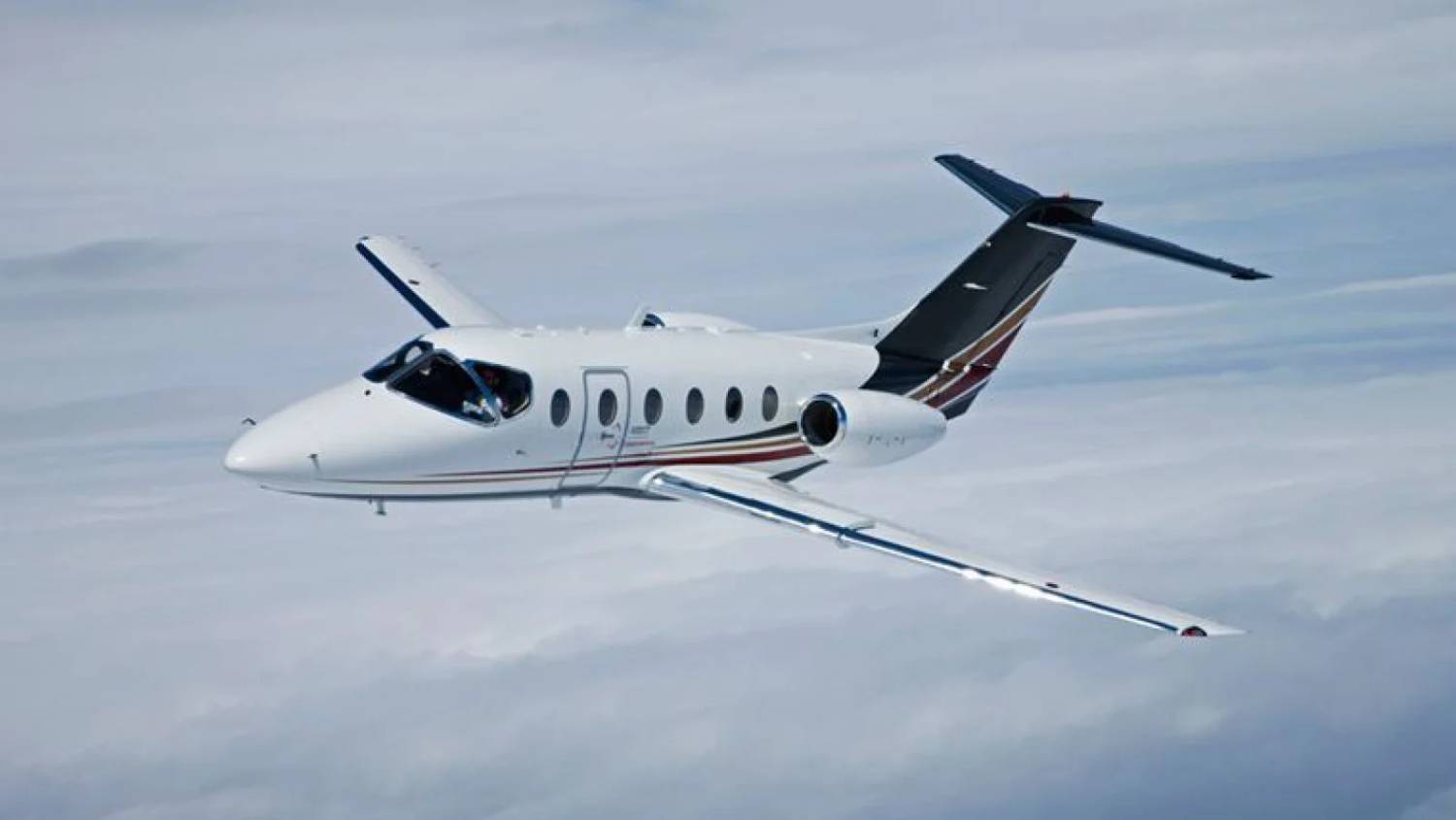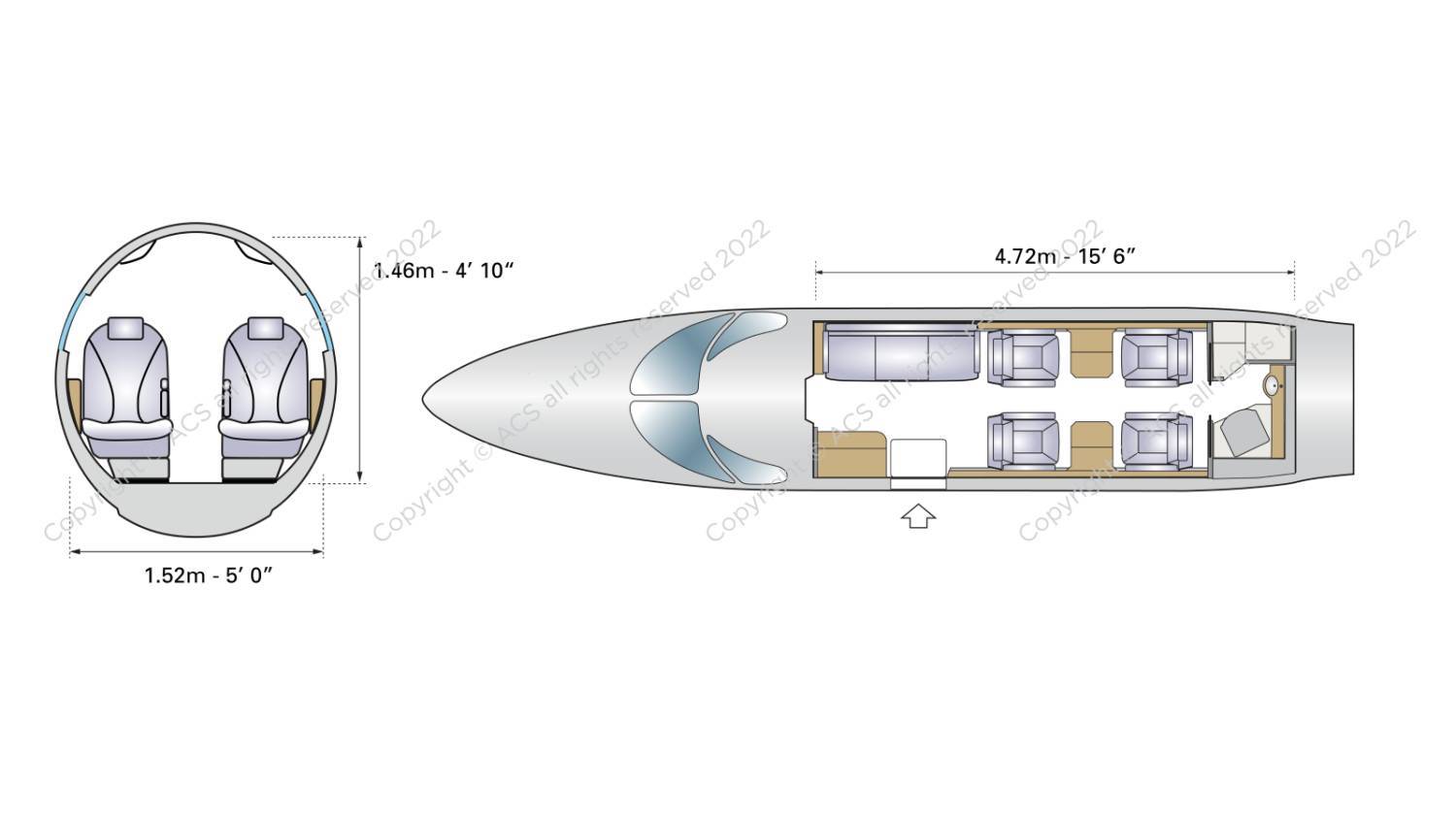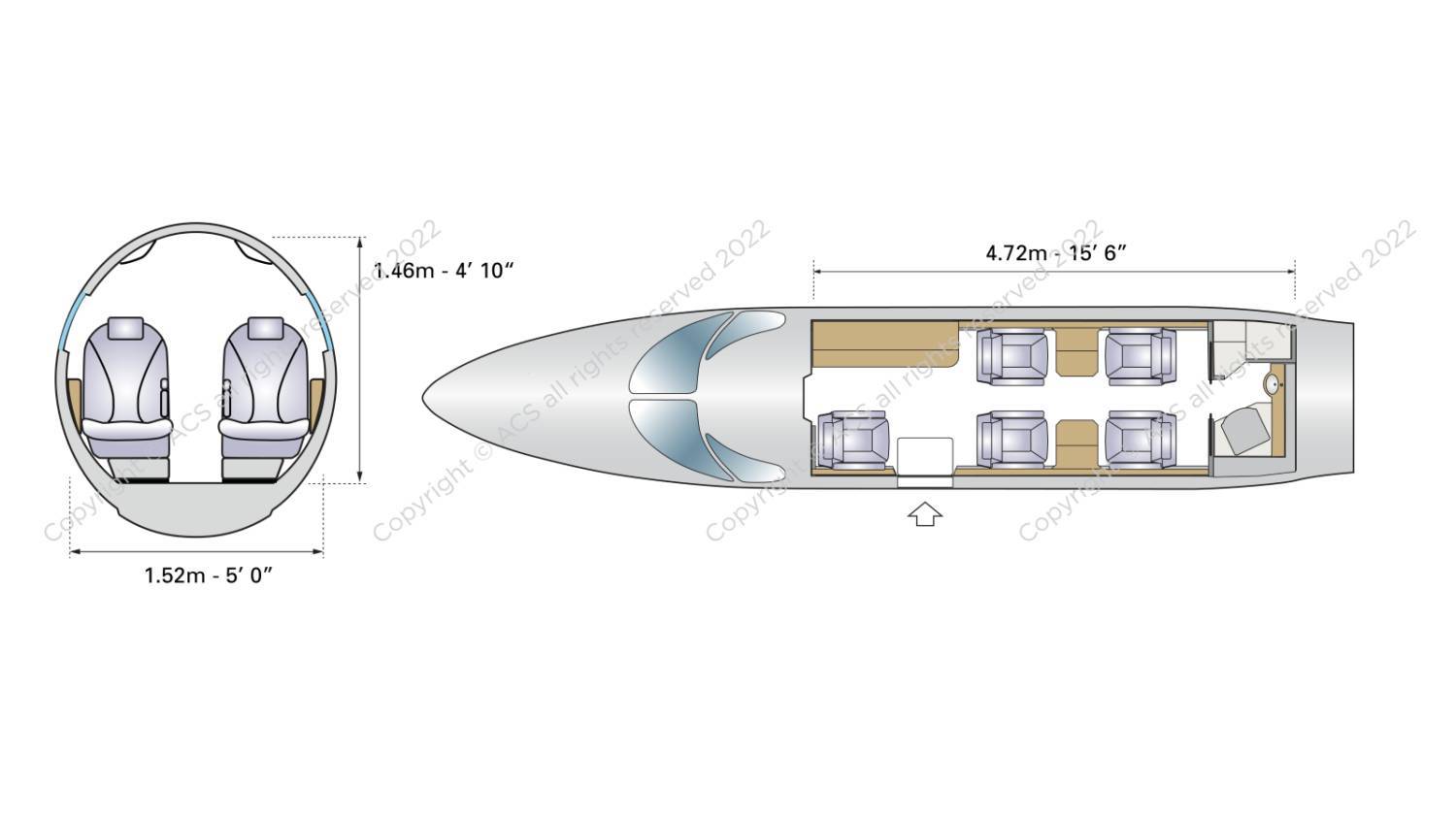




untitled
Description
- Passengers 7
The Nextant 400XT and 400XTi are modified and modernised versions of the Hawker 400XP (also known as the Beechjet 400) and two of the highest-performing light jets on the market.
About this aircraft
- Introduced in 2011 as the world’s first remanufactured business jet, the Nextant 400XT combines the Hawker 400XP’s airframe with upgraded engines and avionics to boost performance. The updated Nextant 400XTi followed in 2014.
- The 400XT has a 50% greater range than the 400XP and can fly non-stop from New York to Miami and London to Ibiza. It also has a much-improved climb rate.
- According to Nextant, the aircraft has a maximum range of around 4,000 km with four passengers, out-performing even the award-winning Phenom Embraer 300.
- The Nextant 400XT is usually configured in a seven-seat layout, with an extra seat in the enclosed lavatory if needed. Up to nine passengers can travel if one sits in the cockpit with a single pilot, but this option isn’t available for charters.
- The Nextant 400XT’s baggage compartment is large enough for six suitcases.
The high-performing Nextant 400XT and 400XTi can travel further and faster than almost every other light jet on the market.
Interior design

An innovative square-oval design creates plenty of space in the Nextant 400XT/XTi’s virtually silent, flat-floored cabin. The standard seven-passenger layout features four seats in a club arrangement with fold-out tables, flanked by three individual seats or a divan in the front. In all layouts, the enclosed lavatory can be used as an extra passenger seat.
Amenities include a refreshment centre, onboard HD entertainment, a cabin management system with individual temperature and lighting controls, and electronically dimmable window shades. Data and communications systems allow passengers to work onboard.
Below are two examples of a Nextant 400XT and 400XTi configuration:

Interesting facts to learn before you fly
- The Nextant 400XT/XTi is ideal for mid-range flights like New York to Miami and London to Milan.
- The large cabin feels even bigger thanks to an ingenious interior design.
- The baggage hold has space for bulky items like golf bags and skis.
Technological features
The 400XT/XTi’s exceptional range is largely thanks to two Williams FJ44-3AP engines. These are significantly lighter and more fuel-efficient than their predecessors, with a full authority digital engine control (FADEC) system eliminating the need for a thrust reverser and an autothrottle to reduce fuel burn and pilot workload.
The cockpit is fitted with the Collins Aerospace ProLine 21 avionics suite, which features four large-format, configurable displays with LED backlighting.
The updated 400XTi offers more space, better noise insulation and improved aerodynamics, including raked winglets with LED lighting.
History
The Beechjet 400 series began with the Mitsubishi MU-300 Diamond, which first flew in 1978 before the upgraded Diamond 2 launched in 1985. Only 11 Diamond 2s were built before Beech purchased the design and production rights, renaming it the Beechjet 400. The 400A launched in 1990 with a greater operating ceiling and more spacious cabin.
Aerospace conglomerate Raytheon acquired the line in 1993, dubbing it the Hawker 400 and improving the aerodynamics for better performance and range. The 400XP entered the market in 2004, followed by the 400XPR in 2017 with new Hawker winglets and avionics, Williams FJ44 engines and a refurbished interior.
Nextant Aerospace remanufactured the Hawker 400A/XP as the Nextant 400XT, which was unveiled at EBACE in 2011 and certified in 2012. The updated Nextant 400XTi variant launched in 2014 and competes with the Hawker 400XPR official modification.
Manufacturer
Founded in 2007, Nextant Aerospace is an American business specialising in the remanufacture of business jets.
The company’s first product was the Nextant 400XT, a modified and modernised version of the popular Hawker 400XP, followed by the updated Nextant 400XTi. Nextant’s other projects include the G90XT turboprop and the 604XT, a remanufactured Bombardier Challenger 604.
Cost
Acquisition costs for the Nextant 400XT and 400XTi typically range from $2.5 million to $4 million (USD).
Charter rates
Charter rates for the Nextant 400XT and 400XTi vary depending on a variety of factors, including the length of your journey and the airports you’re flying in and out of.
If you’d like to charter a Nextant 400XT or 400XTi,
for a quote today. For information on other charter options, browse our list of available private aircraft.
Wet lease rates
ACMI (Aircraft, Crew, Maintenance, Insurance) wet lease rates for the Nextant 400XT and 400XTi vary depending on the age of the aircraft, lease term length, number of guaranteed block hours and average cycle ratio. Contact us for a personalised quote.
Key Details
•Aircraft Type: Light Jet
•Passengers: Up to 7
•Cruise Speed: 850 KM/H (530 MPH)
•Range: 3427 KM (2130 Miles)
Specifications:
•Luggage Space: 56 ft³
•Enclosed Lavatory: Yes
•Flight Attendant: Yes
•Pressurised Cabin: Yes
Terms & Conditions
Terms and Conditions for Private Aircraft Charter
1.Cancellation and Refund Policy
Once the booking is confirmed, all orders are non-cancellable and non-refundable. Please ensure all travel arrangements are carefully reviewed before making a reservation.
2.Flight Schedule Changes
Requests to change flight times or destinations must be submitted at least 48 hours in advance and are subject to aircraft and crew availability. Changes may incur additional charges.
3.Flight Delays and Cancellations
In the event of delays or cancellations caused by weather, technical issues, or other force majeure events, we will make every effort to reschedule the flight but will not be liable for any additional costs or compensation.
4.Crew Arrangements
All flights are operated by professional crew members. Crew assignments are determined by the company and cannot be changed or adjusted based on passenger requests.
5.Baggage Restrictions
Each aircraft has specific baggage weight and size limits. Please confirm baggage requirements at the time of booking. Excess baggage may incur additional charges or be refused for transport.
6.Passenger Safety and Conduct
All passengers must comply with the instructions of the crew. The company reserves the right to refuse service to passengers who violate safety regulations or disrupt the experience of others.
7.Flight Time and Overtime Charges
If the flight exceeds the scheduled duration, additional charges may apply. These charges will be calculated based on the aircraft type and the length of the delay.
8.Force Majeure
In the event of natural disasters, political unrest, or other force majeure events that prevent the flight from operating as scheduled, we will make every effort to reschedule the flight but will not be responsible for additional costs or liabilities.

